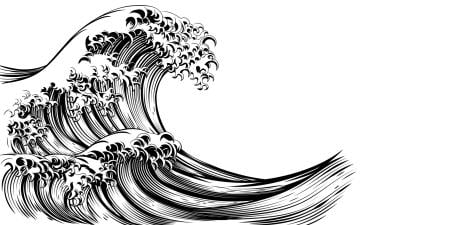Over the past several decades we have seen the emergence of 2 related movements in American health care. The first is an emphasis on improving patients' quality of life. The term "patient" is arguable here, however, because the quality of life in question is not necessarily that of people who are sick. A growing number of medical technologies are employed to improve the looks, performance, and psychological well-being of people who are healthy. Over the past decade or 2 we have seen the development of Paxil for shyness, Rogaine for baldness, Viagra for impotence, Provigil for sleepiness, Adderall for poor concentration, Meridia for excess weight, Botox for wrinkled faces, Humatrope for short stature and Sarafem for premenstrual discomfort—and that short list does not even include the tools in the surgeon's kit, that include rhinoplasty, blepheroplasty, breast augmentation, or ETS surgery for blushing or excessive sweating. Prescription drugs and surgery are not just for sick people anymore. They are for anyone who has a willing physician, good health insurance, and a robust checking account.
The second (and related) movement is the submission of the American health care system to the machinery of consumer capitalism. This is not just a matter of the rise of managed care corporations, for-profit hospital chains, and direct-to-consumer drug advertising. It is a change in the ethos of medicine. American doctors and patients are viewing medical care as a market commodity provided to consumers who are able and willing to pay for it. Now that a market model has taken over, the practice of medicine has become driven not just by what patients need, but also by what consumers want.
In a sense, this shift aligns the ethos of medicine with that of American society as a whole. Many of us now see our identities as projects to be shaped and improved by the things we consume.1 We buy clothes, houses, cars, and other consumer goods with the expectation that they will express something about our identities. Who we are is reflected by what we own. We also measure the success of our lives through the quality of our experiences, which we also shape through what we buy. For many Americans, the "good life" is a synonym for more and better entertainment, leisure activities, and vacations. Now that medicine has moved into the market economy, it should not be surprising that we would come to think of the tools of medicine not merely as a means to relieve illness and disability but as ways to improve our quality of life.
Once the success or failure of a life is determined solely by the quality of its experience, the shape of that life changes in at least 2 subtle ways. First, the end point for success becomes less clear because there is no cap on just how high our quality of life can be. We envy people whose quality of life seems better, but we have no reliable way of comparing our quality of life to theirs. This can create the sense of life as an endless race in which one is constantly falling behind.2 Second, we become hungry for experts to advise us on how our quality of life can be improved. As a result, America has produced a cadre of specialized experts who tell us how to improve our sex lives, increase our financial well-being, produce psychologically healthy children, live longer, make friends, and lose weight.3
Such experts now include physicians, whose domain of expertise has expanded from the physical to the psychological and social. Today it is seen as entirely fitting and proper for physicians to employ medical technology to remedy the social and psychological problems of stigma, alienation, and poor self-esteem.
Cosmetic surgery is a good example of this shift. At the beginning of the 20th century, cosmetic surgery was a largely marginal practice, performed mainly by quacks and hucksters. Yet by the end of the 20 th century, cosmetic surgery had become a multi-billion dollar business. Today it has its own professional societies, and it is practiced by reputable surgeons in elite medical centers.
A key turning point, according to historian Elizabeth Haiken, was the notion of the "inferiority complex," which emerged from the writings of the psychologist Alfred Adler in the 1930s and 40s.4 Once Americans began to take on the idea that people could be psychologically damaged because of the way they looked, surgeons had an ethical justification for performing cosmetic surgery. Cosmetic surgery was not merely a matter of aesthetics; it was a medical treatment for the inferiority complex. Haiken calls this practice "psychiatry with a scalpel."4
American physicians today use a similar rationale for all varieties of medical enhancement. Medical procedures that used to be seen as cosmetic are now employed to treat the psychological damage that may result from social stigma or poor self-esteem. Pediatricians give short boys synthetic growth hormone to treat the stigma of short stature; dermatologists inject Botox into middle-aged foreheads to treat the stigma of aging; internists prescribe Rogaine to help aging men overcome the stigma of baldness; surgeons perform breast augmentation to prevent the stigma of having small breasts. This is not "psychiatry with a scalpel" as much as "sociology with a scalpel." Doctors cannot fix social conditions, so they "fix" the patient instead.
In this way, medical enhancement is ideally suited for the market. The market produces images of beauty against which young women measure their own looks; then it sells these women remedies such as breast augmentation and diet drugs. The market creates the conditions for alienation with soulless exurbs, like shopping malls and 24-hour cable TV; then it treats the alienation with Valium and Zoloft. The market reinforces the stereotypes that make many racial minorities feel ashamed of the way they look; then it produces skin lighteners, hair straighteners, and cosmetic surgery to make the minorities look more like the white majority. And so the circle is complete. The market creates the conditions for which it then sells a cure.
References
-
Walzer M. Thick and Thin: Moral Argument at Home and Abroad.Notre Dame, Indiana: Notre Dame University Press; 1994: 23-24.
-
Elliott C. Better Than Well: American Medicine Meets the American Dream. New York; W.W. Norton; 2003.
-
Percy W. Lost in the Cosmos: The Last Self-Help Book. New York; Washington Square Press; 1983.
-
Haiken E. Venus Envy: A History of Cosmetic Surgery (Baltimore , Maryland: Johns Hopkins University Press; 1997.



